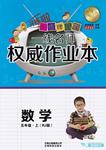题目内容
Five cloned pigs,whose organs are much less likely to be rejected(排斥) by a patient,have been born in the U.S.
More than 62,000 people in the U.S. alone are waiting to ____ donated hearts,lungs and so on.The number of human donors falls far short of ____.Pig organs are of a(n) ____ size to human organs,and some scientists hope they might be used to help meet the ____.But previous attempts to transplant pig tissue into humans have ____.
The five pigs ____ a gene that adds a sugar to the surface of pig cells.The sugar would ____ immune(免疫的) rejection of the tissue.“This advance provides a near?time ____ for overcoming the problem that there is not enough human organs for transplants,”says an expert.“This is the ____ gene for overcoming the ____ stage of rejection.”
____,scientists warn that much more work is necessary ____ organs from copies of the pigs could be transplanted into humans.Human genes will need to be added,to ____ rejection of the organ in the long term.There are also ____ that pig viruses could infect patients.
Cloning techniques were ____ to the production of the pigs.Genes can only be knocked out(去除) in a single cell.Cloning of these single cells then allowed the ____ of a whole animal in which the gene was knocked out in every cell.But the PPL researchers have ____ in knocking out only one copy of the gene.The team will now attempt to knock out both copies of the gene.
The team will also ____ tests to investigate whether a virus from the pigs could infect human cells.“Although a lot of the work is very ____,we’re still very far off being able to grow an organ,” says Julia,who is working on this project and quite ____ to creating similar knock?out pigs with researchers at the University of Missouri.
1.A.exchange? B.check
C.possess? D.receive
2.A.discussion? B.demand
C.doubt? D.distance
3.A.beneficial? B.identical
C.similar? D.certain
4.A.shortage? B.condition
C.satisfaction? D.argument
5.A.continued? B.failed
C.finished? D.paused
6.A.lack? B.include
C.make? D.change
7.A.leave? B.cause
C.block? D.destroy
8.A.supply? B.ambition
C.contribution? D.solution
9.A.only B.rare
C.key? D.safe
10.A.last? B.whole
C.next? D.early
11.A.However? B.Therefore
C.Besides? D.Finally
12.A.because? B.before
C.if? D.after
13.A.prevent B.ignore
C.judge? D.weaken
14.A.regrets? B.emotions
C.concerns? D.interests
15.A.simple? B.vital
C.unusual? D.basic
16.A.collection? B.application
C.reception? D.creation
17.A.delighted? B.succeeded
C.joined? D.believed
18.A.conduct? B.plan
C.design? D.study
19.A.perfect? B.strange
C.exciting? D.disappointing
20.A.opposed? B.used
C.devoted? D.suited
1.C
2.D
3.A
4.B
5.C
6.A
7.C
8.D
9.A
10.C
11.B
12.C
13.A
14.D
15.A
16.B
17.A
18.B
19.C
20.D
【解析】
1.
解析 由本段内容可知,应是等待接受器官的移植。
2.2】 B
解析 器官捐献不能满足人们的需求,demand符合语境。
3.3】 C
解析 根据上下文可知,克隆猪的器官可以被移植到人体内,它们的器官应该和人类的器官大小相似。
4.4】 A
解析 根据本段第二句“The number of human donors falls far short of ____.”可知,克隆猪的器官是为了弥补人类可移植器官的不足。
5.5】 B
解析 上一句提到科学家期望克隆猪的器官能够应用于人类器官移植领域,but表示转折,说明以前类似的试验失败了。
6.6】 A
解析 由下文“...a gene that adds a sugar to the surface of pig cells.The sugar would ____ immune(免疫的) rejection of the tissue.”可推测,这一基因会导致不好的结果,又根据“‘This advance provides...’”可知,这五只克隆猪没有这一基因,因此选lack。
7.7】 B
解析 根据上下文可知,这种糖分可能会使器官产生免疫排斥,cause符合语境。
8.8】 D
解析 根据后面overcoming the problem的提示,可知对人类可移植器官不足的问题提供了一个解决办法。
9.9】 C
解析 根据上文“...a gene that adds a sugar to the surface of pig cells.”可知,这一基因对克服器官排斥问题很关键,所以选key。
10.10】 D
解析 根据下一段第二句“Human genes will need to be added,to ____ rejection of the organ in the long term.”可知,对这一基因的处理只能解决器官排斥早期的一些问题。
11.11】 A
解析 根据下文“...scientists warn that much more work is necessary...”可知,本段内容与上一段意思是转折关系,所以用however。
12.12】 B
解析 根据下文“Human genes will need to be added...”可知,在克隆猪的器官可以移植到人体内之前,还有很多工作要做,所以用before。
13.3】 A
解析 根据上下文可知,科学家们的这些工作是为了防止器官排斥。
14.4】 C
解析 由句意可知,猪身上的病毒可能会感染病人,这是人们所担心的。
15.5】 B
解析 这五只猪是克隆动物,显而易见,克隆技术对繁育出这几只猪至关重要,vital符合语境。
16.6】 D
解析 基因的去除只有在单个细胞中才能进行,克隆这些单细胞然后再将其培育成一只完整的动物,这样动物身上的每个细胞中的这种基因就都被去除了,creation符合语境。
17.17】 B
解析 根据下文“The team will now attempt to knock out both copies of the gene.”可知,PPL researchers已经成功去除这种基因的一个副本。
18.8】 A
解析 句意为:这一团队还将进行试验研究克隆猪身上的细菌是否会感染人体。conduct tests进行试验。
19.9】 C
解析 although表示让步,根据主句“‘we’re still very far off being able to grow an organ,’”可知,exciting符合语境。
20.20】 C
解析 Julia致力于培育这种去除基因的克隆猪,devoted符合语境。

 培优好卷单元加期末卷系列答案
培优好卷单元加期末卷系列答案 一线名师权威作业本系列答案
一线名师权威作业本系列答案
Many people consider their pets members of the family and are very sad when they die, but what if you could clone your dog, cat or bird?
A scientist in New Orleans, who has proved his ability to clone other animals, is now offering the possibility to pet owners here in Wisconsin.
Scientists have not been able to clone dogs, cats or other pets, but if and when the time comes, several companies will be ready and able to do the job.
The question is: Are you ready to clone your pet? Brett Reggio is betting on it.He is working on his Ph. D at Louisian State University. He's successfully cloned a goat five times and wants to try the process on family pets. So he started a business called Lazaron. “What Lazaron provides is the first step in the cloning process. ”He said.“It’s for curing and storing the fiberglass cells that will be used for cloning.”
“Your first reaction is yeah! I think I’d like that.” said Donna Schacht, a pet owner.
“I don’t believe you can ever replace a special love,” pet owner Paulette Callattion said.
Most pet owners will tell you freezing your pet’s DNA in hopes of one day cloning it is a personal decision.
Scientists say that cloning your own pet doesn’t mean that the offspring(后代) will have the same intelligence, temperament(性情) or other qualities that your pet has.
【小题1】From the passage we know that scientists have ______.
| A.tried to clone animals |
| B.cloned many kinds of animals |
| C.been able to clone pets for people |
| D.once cloned goats successfully |
| A.clone pets for people |
| B.store the DAN of people’s pets for cloning one day |
| C.make pets members of a family |
| D.collect different ideas on cloning from people |
| A.they think it would be too expensive |
| B.they don’t think scientists will one day be able to clone their pets |
| C.they think the cloned pet would not be the one they once had |
| D.they don’t want to give any love to the cloned pet |
| A.looked different from the pet you once had |
| B.turned out to be another kind of animal |
| C.had a different character |
| D.were just the same pet your once had |
Scientist Says ‘No’ to Human Cloning
“I’ve never met a human worth cloning,” says cloning expert Mark Westhusin from his lab at Texas A&M University. “It’s a stupid endeavor.”
That’s an interesting choice of adjective, coming from a man who has spent millions of dollars trying to clone a 13-year-old dog named Missy. So far, he and his team have not succeeded, though they have cloned two cows and a cat.
They just might succeed in cloning Missy soon — or perhaps not for another five years.
Westhusin's experience with cloning animals leaves him upset by all this talk of human cloning. In three years of work on the Missy project, using hundreds upon hundreds of dog's eggs, the A&M team has produced only a dozen or so embryos carrying Missy's DNA. None have survived the transfer to a surrogate(代孕的)mother. The wastage of eggs and the many spontaneously aborted(流产,发育不全) fetuses(胎)may be acceptable when you're dealing with cats or bulls, he argues, but not with humans. “Cloning is incredibly inefficient, and also dangerous,” he says.
Even so, dog cloning is a commercial opportunity, with a nice research payoff. Ever since Dolly the sheep was cloned in 1997, Westhusin's phone has been ringing with people calling in hopes of duplicating their cats and dogs, cattle and horses. “A lot of people want to clone pets, especially if the price is right,” says Westhusin. Cost is no obstacle for Missy's mysterious billionaire owner; he's put up $3.7 million so far to fund A&M's research.
Contrary to some media reports, Missy is not dead. The owner wants a twin to carry on Missy's fine qualities after she does die. The prototype(原型;雏形)is, by all accounts, athletic, good-natured and supersmart. Missy's master does not expect an exact copy of her. He knows her clone may not have her temperament(气质、性情). In a statement of purpose, Missy's owner and the A&M team say they are “both looking forward to studying the ways that her clones differ from Missy.”
Besides cloning a great dog, the project may contribute insight into the old question of nature vs. nurture. It could also lead to the cloning of special rescue dogs and many endangered animals.
However, Westhusin is cautious about his work. He knows that even if he gets a dog pregnant, the offspring, should they survive, will face the problems shown at birth by other cloned animals: abnormalities like immature lungs and heart and weight problems~ “Why would you ever want to clone humans,” Westhusin asks, “when we're not even close to getting it worked out in animals yet?”
【小题1】By “stupid endeavor”, Westhusin means to say that ________.
| A.human cloning is a foolish undertaking |
| B.animal cloning is absolutely impractical |
| C.human cloning should be done selectively |
| D.animal cloning is not worth the effort at all |
| A.Its success is already in sight. |
| B.It is progressing smoothly. |
| C.It is doomed to utter failure. |
| D.Its outcome remains uncertain. |
| A.study the possibility of cloning humans |
| B.search for ways to modify its temperament |
| C.find out the differences between Missy and its clones |
| D.examine the reproductive system of the dog species |
| A.a bad temper |
| B.defective(有缺陷的、有毛病的)organs |
| C.immune deficiency |
| D.an abnormal shape |